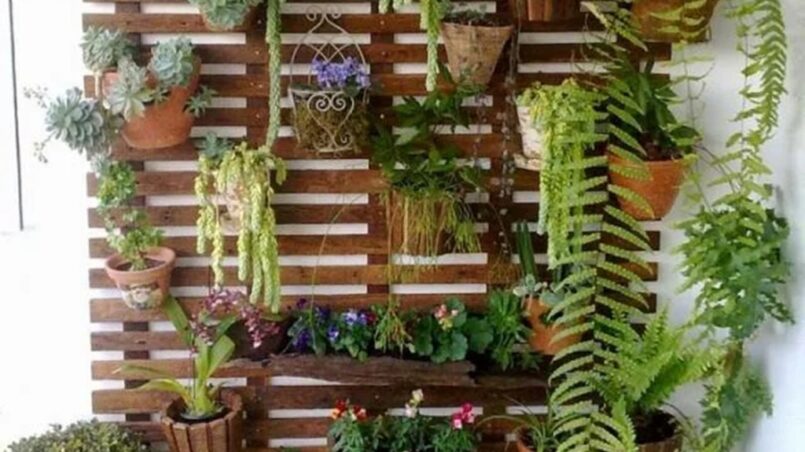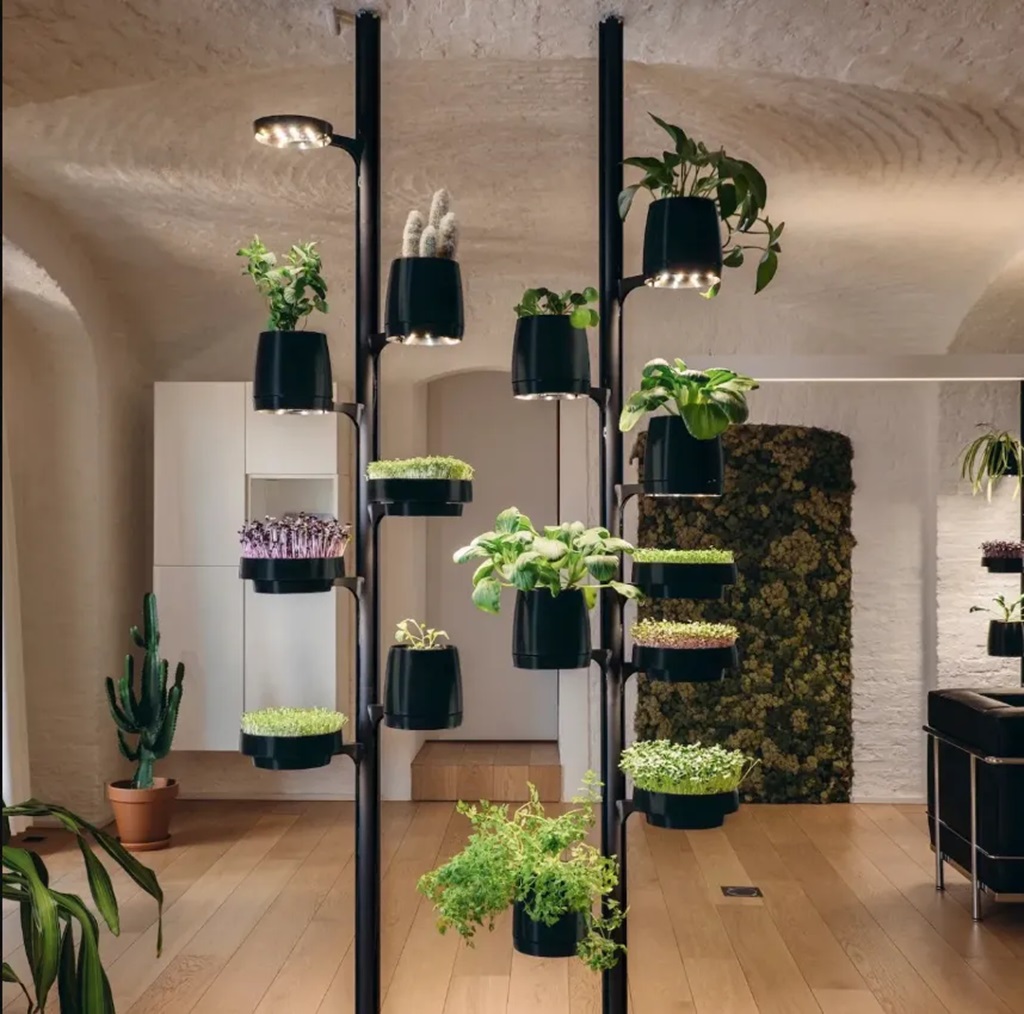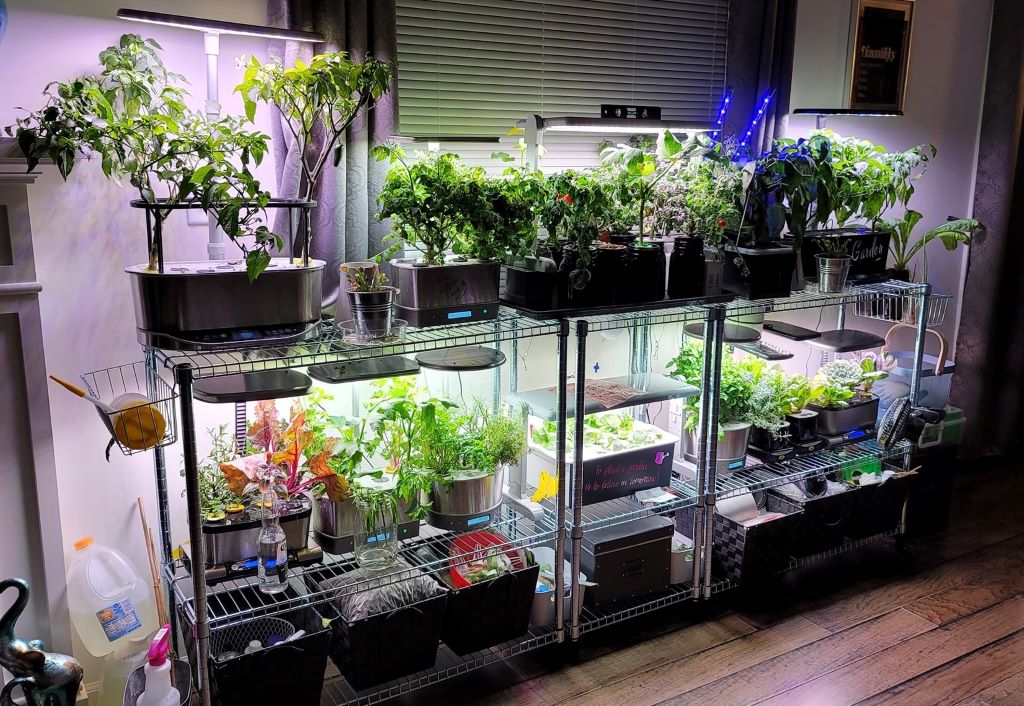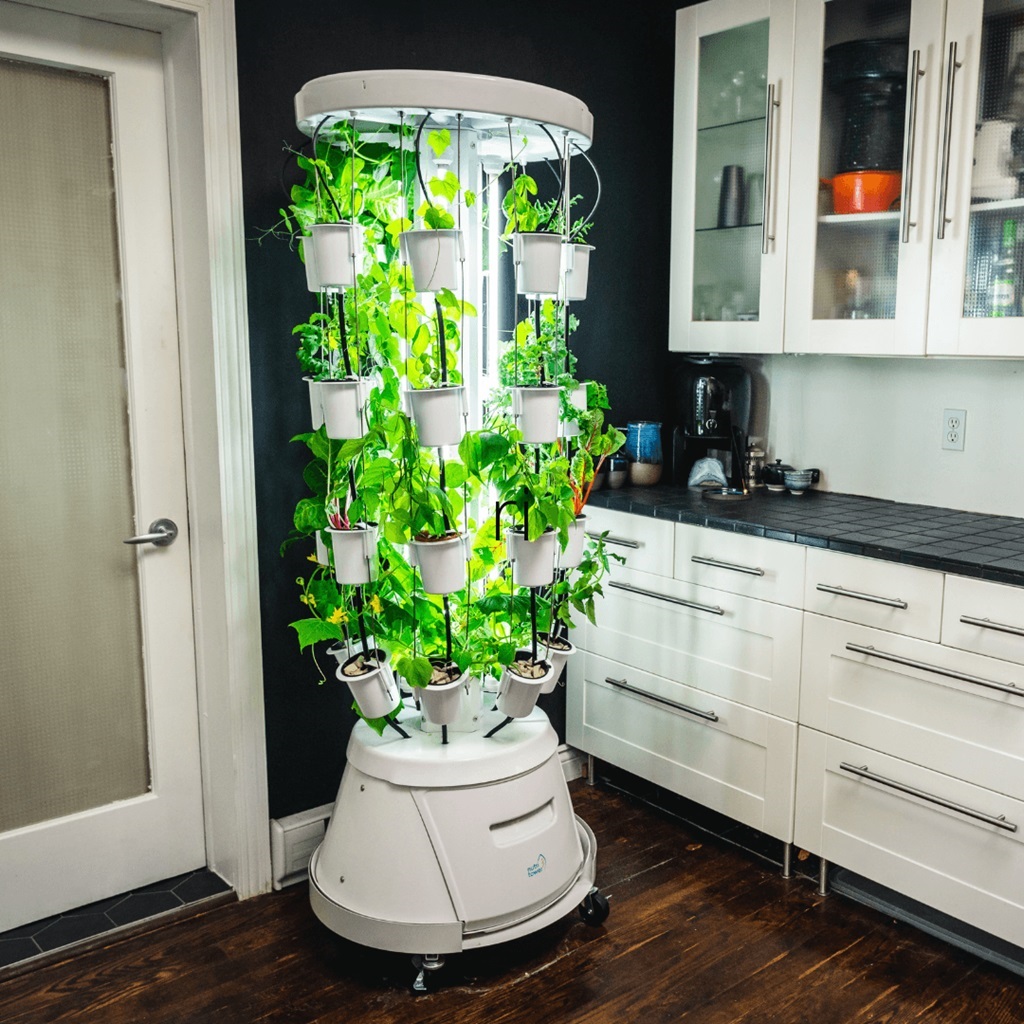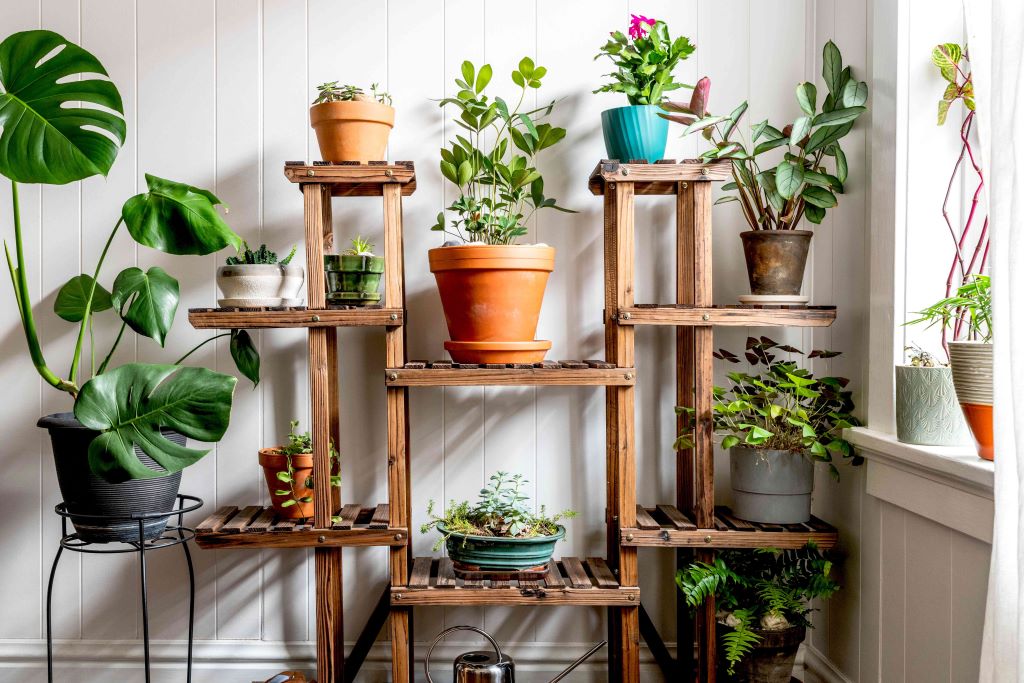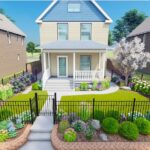Having your DIY indoor garden system can be an incredibly rewarding experience. Not only does it allow you to grow fresh herbs, vegetables, and flowers year-round, but it also makes a beautiful addition to your home decor. With a bit of effort and creativity, you can design a unique indoor gardening system that fits your space and horticultural aspirations. Follow this guide to learn everything you need to know about building your indoor garden at home.
Benefits of A DIY Indoor Garden System
Before diving into the how-to aspects, let’s first go over some of the great benefits that come with having an indoor garden:
- Access to fresh produce – Grow your own herbs, greens, tomatoes, peppers and more. Having an indoor garden gives you a supply of ultra-fresh vegetables and herbs right in your own home.
- Aesthetic appeal – A thriving indoor garden looks beautiful and adds life to any space. The soothing green colors and textures are naturally decorative.
- Purifies air – Plants help filter out pollutants and increase oxygen levels through photosynthesis. An indoor garden can actually help purify the air in your home.
- Eases stress – Caring for houseplants and watching your garden grow can lower stress and uplift your mood. It provides a relaxing hobby.
- Educates kids – Getting kids involved teaches them about nature, responsibility, nutrition and more. An indoor garden makes a great educational project.
- Saves money – When you grow your own produce, you spend less money at the grocery store on herbs and veggies. An indoor garden leads to homegrown savings.
Now that you’re excited about the prospect of having your own indoor garden, let’s get into the details of how to make it happen!
Planning Your Indoor Garden
The first step is to evaluate your space and decide on the scale and location of your DIY indoor garden system. Here are some factors to consider:
- How much space can you dedicate to an indoor garden? Windowsills, countertops, tables, hanging shelves, wall units and greenhouse cabinets are all options.
- What room has the best natural sunlight? Most edible plants will require at least 4-6 hours of direct sun daily. South or west facing windows are ideal.
- Do you want a small garden for herbs and leafy greens or a larger setup with grow lights for veggies and flowers? This will impact the amount of space needed.
- How will you water and drain the plants easily without making a mess? Access to a sink and drainage are preferable.
- What style aesthetically fits your home decor? Match your indoor garden system to your interior design tastes.
Once you’ve thought through the considerations above, sketch out some layout ideas for where your indoor garden could live. Having a plan in place before you start building will make the process smoother.
Choosing a Growing Method
There are three main setups you can use to house your indoor garden:
1. Windowsill Planters
This is the simplest option – use individual planters placed in sunny window locations around your home.
- Pros: Extremely easy setup, affordably priced, beginner friendly.
- Cons: Limited space unless you have many available windows.
2. Shelving Unit Gardens
Add lighting and shelving to a standalone unit to create vertical gardening space.
- Pros: Increased growing capacity, adaptable to many spaces, easy access to plants.
- Cons: Requires more DIY skills, costs more than windowsill planters.
3. Cabinet or Enclosed Gardens
Use an indoor greenhouse cabinet or convert a wardrobe or large piece of furniture into a closed garden system.
- Pros: Can support a large number of plants, looks very aesthetically pleasing.
- Cons: Most expensive option, less direct access to plants, need ventilation.
Assess your budget, skill level, plant needs and aesthetics to decide which growing method is the best fit. Many indoor gardens incorporate a combination of methods for the maximum benefit.
Choosing Containers and Planters
Once you’ve decided on setup style, the fun part comes when selecting containers and planters! Here are tips for choosing indoor plant vessels:
- Clay, ceramic, plastic, fabric and wood all work well and come in many shapes and sizes.
- Make sure containers have drainage holes at the bottom to prevent overwatering.
- Use hanging planters, wall mounts, stacking crates and vertical towers to maximize space.
- Match planter style and color to your interior decor tastes for a cohesive look.
- Grow herbs together in one long window box or use separate smaller pots.
- Larger vegetables like tomatoes need at least 5-gallon containers for their root systems.
- For a farm-fresh vibe, repurpose tin cans, plastic bottles or wooden crates.
- Use self-watering pots like this for plants that need more frequent watering.
Get creative with your plant vessels! The choices are truly endless.
Choosing the Right Growing Media
The material inside your planters that holds the plant roots is known as the growing media or substrate. There are several common options:
Soil
Good old fashioned potting soil is an affordable choice that works well for many indoor edibles and ornamentals. Look for a high-quality organic mix.
Coco Coir
This soil alternative is made from the fibers of coconut husks. It holds moisture while still allowing airflow to roots.
Rockwool
Rockwool is made from molten rock spun into fibers and formed into cubes or blocks. It evenly distributes moisture.
Peat Moss
A common soil amendment, peat moss improves moisture retention and soil structure. It’s rarely used on its own.
Vermiculite
This mineral product has a spongy texture that holds air pockets for improved water and oxygen circulation in the root zone.
Perlite
Like vermiculite, perlite creates air space in the growing medium. It prevents soil compaction.
For most indoor gardens, an organic potting mix amended with coco coir or peat moss works perfectly. Make sure the pH is between 6-7.
Choosing Plants for an Indoor Garden
When selecting what to grow in your DIY indoor garden system, there are three important factors to consider:
Sunlight Needs
Some plants thrive on a windowsill with just 4 hours of sun while others need a full day of strong light. Know how much sun your space receives before choosing crops.
Climate Conditions
Match plants to the ambient temperature, humidity and airflow in the rooms where your garden will live. Some prefer cool and damp while others like warm and dry.
Type and Size
Make sure to choose herbs, vegetables and flowers suited to container growing and the proper size for your planters. Read seed packet info.
Here are some specific varieties that make great indoor garden choices based on light needs and size:
Low Light: Chinese Evergreen, Prayer Plant, Pothos, Philodendron, ZZ Plant, Snake Plant
Moderate Light: spider plant, fern, peace lily, aloe vera, herbs – mint, oregano, thyme
High Light: cilantro, parsley, basil, dill, rosemary, lettuce, spinach, kale, peppers, tomatoes, flowering annuals
Remember, you can always use grow lights to provide artificial sunlight to demanding vegetables and flowers. Extend the range of what your indoor garden can support.
Setting Up Supplemental Lighting
Unless you have an entire sunroom or greenhouse, most edible plants will need supplemental light in order to really thrive indoors. Here’s how to provide full spectrum artificial light:
Grow Light Bulbs
- Compact fluorescent (CFL) and LED bulbs designed specifically for plants.
- Use in any lamp around your indoor garden space.
- Choose bulbs that provide full spectrum light ideal for seedlings.
- Use clamp lights to angle bulbs directly over plants.
Grow Light Fixtures
- Dedicated fixtures with CFL, LED or high intensity discharge (HID) grow lamps.
- Mount above shelves or use for a cabinet or enclosed garden.
- Use adjustable hangers so light can move as plants grow taller.
- Timer settings allow customization of the light schedule.
Natural Lighting Solutions
- Large, south facing windows provide the best natural light.
- Supplement with reflectors and mirrors to increase light exposure.
- Keep plants as close to the window as possible.
- Rotate plants for even lighting on all sides.
Proper lighting is crucial, so invest in quality grow bulbs or fixtures if sunlight alone won’t cut it!
Ventilation and Circulation
Plants release moisture through transpiration as part of photosynthesis. Plus, indoor spaces themselves can be humid. This moisture in the air can lead to problems with mold, algae and fungal diseases.
That’s why good airflow from an indoor garden ventilation system is vital. Here are some tips:
- Use small fans to keep air circulating within the garden space. Oscillating fans work well.
- Open doors or windows periodically to refresh the air if possible.
- Install exhaust fans above the garden to actively ventilate and remove humid air.
- Avoid completely enclosed setups without ventilation or use a dehumidifier.
- Space plants appropriately so air can flow between them. Density creates humidity.
Proper ventilation and air circulation fans allow you to avoid issues with indoor excessive moisture.
Providing Adequate Water
Consistent watering is one of the most important factors in caring for any indoor garden. Here are some effective indoor garden watering methods:
Manual Hand Watering
- Requires frequent checking soil moisture by hand.
- Use a watering can or pitcher for easy pouring.
- Always water at soil level rather than from the top.
- Adjust frequency and amount based on each plant’s needs.
Self-Watering Planters
- Planters with built-in reservoirs and wicks provide passive water.
- Water is wicked up to roots from a base reservoir as needed.
- Check every few weeks to refill reservoir.
Irrigation Systems
- Automated drip systems or spray nozzles can be set on timers.
- Regularly provides controlled amounts of water to each plant.
- Requires some DIY setup and occasional maintenance.
Smart Garden Technologies
- High-tech gardens have sensors to monitor soil moisture.
- Connected apps tell you when to water and can even self-water.
- More expensive option but takes the guesswork out of watering!
Try a combination of methods to make watering your indoor plants as easy as possible. The key is avoiding both under and overwatering.
Fertilizing Your Plants
Indoor garden plants benefit from monthly fertilizing during the growing season to fuel growth and flowering. Here are organic options:
Compost Tea
Steep quality compost in water for 24-48 hours. The resulting “tea” provides beneficial microbes and nutrients.
Fish Emulsion
This all-natural fertilizer is made from concentrated fish byproducts. It provides nitrogen, potassium and phosphorus.
Worm Castings
Also called vermicompost, worm castings add micronutrients and humates that strengthen roots and growth.
Seaweed Extract
Derived from kelp, seaweed extracts bolster plant immunity and provide over 60 trace elements.
Manure Tea
Cow, chicken, rabbit or other manure can be brewed into a mild liquid fertilizer.
Always follow label instructions when applying fertilizers. And consider doing a periodic flush with plain water to prevent salt buildup.
Pollinating Flowers and Vegetables
For garden plants that produce flowers, fruits or vegetables, pollination is required for the plant to develop seeds and food properly. Here’s how to pollinate indoors:
Manual Hand Pollination
Use a small brush or cotton swab to transfer pollen from flower to flower manually. Effective but very time-consuming!
Electric or Battery-Powered Toothbrush
Hold the vibrating head against flowers to shake pollen loose for quick hand pollination.
Fan Placement
Direct fans can circulate air currents in the garden space to spread pollen between flowers.
Open Windows
Allow bees and other pollinators to fly inside to pollinate when the weather is nice. Just be sure to close the windows afterward!
Commercial Bombardment
Use an electric device designed to bombard plants with pollen grains suspended in water.
Don’t expect large yields of fruit or veggies without assisting with pollination! Be ready to hand pollinate or find other creative solutions.
Controlling Pests and Diseases
Unfortunately, indoor gardens can sometimes be affected by pests like aphids, mealybugs and spider mites or diseases like powdery mildew and botrytis. Here’s how to prevent and manage them:
- Remove any infected plant material immediately to prevent spreading.
- Use horticultural soaps and oils to smother soft-bodied insects.
- Apply neem oil as both a pest repellent and fungicide.
- Introduce ladybugs or other beneficial predators to naturally control pests.
- Set yellow sticky traps to catch adult insects like fungus gnats.
- Improve air circulation between plants to prevent disease outbreaks.
- Apply a sulfur fungicide spray to manage powdery mildew.
With quick action at the first signs of trouble, you can keep ahead of indoor garden troublemakers! Maintaining optimal plant health is also the best defense.
Harvesting Your Bounty
Once your indoor garden matures and plants start producing, you get to enjoy fresh herbs, fruits, flowers and veggies straight from your home grow space! Here are some harvest tips:
- Use clean scissors or pruners to selectively cut leaves/stems from herbs like basil or mint. Don’t strip the plant.
- Gently pluck ripe cherry tomatoes and peppers so as not to damage the plant.
- Use a sharp knife to cut lettuce and other greens about 2 inches up from the soil. They will regrow.
- Remove spent flower blooms to encourage more buds. Collect seeds from dried flowers.
- Pick apical tips from new growth to encourage bushier basil and parsley plants.
- Check plants daily once fruit begins ripening – harvest when fully colored and fragrant.
Enjoy your edible bounty fresh or consider preserving via freezing, drying or canning for extended usefulness. The harvest and taste is incredibly rewarding!
Troubleshooting Common Indoor Garden Problems
Even the best laid plans can sometimes go awry. If you notice your plants looking stressed, don’t panic! Here are solutions to a few common indoor garden issues:
Yellow or Wilting Leaves – This signals under or overwatering. Check soil moisture and regulate watering frequency accordingly.
Stunted Growth – Lack of nutrition is likely. Fertilize plants with an all-purpose indoor plant food.
Weak Stems – More ambient sunlight or grow light is needed. Supplement or reposition lights closer to plants.
Insect Infestations – Isolate and remove badly infested plants. Use horticultural oil or neem oil treatment on remaining plants.
White Powdery Coating – Powdery mildew fungus. Improve air circulation and treat with sulfur spray.
Don’t hesitate to adjust conditions or your setup until plants seem happy again! An indoor garden takes patience and ongoing tweaks.
Maintaining Your Indoor Garden
To keep your indoor garden looking fabulous and maximizing growth over time, incorporate these maintenance practices:
- Fertilize every 2-4 weeks during spring through fall.
- Prune and trim plants as needed to encourage more shoots and blooms.
- Flush out mineral salt buildup monthly by watering thoroughly with clear water.
- Refresh potting mix annually for better nutrition and drainage. Reuse healthy roots.
- Monitor moisture and growth daily as plants, light and temperatures fluctuate.
- Clean lights and reflectors to maximize usable light levels for plants.
- Rotate pots and adjust grow lights to help plants grow evenly on all sides.
- Wipe dust from leaves and flush soil as needed to prevent salt accumulation.
With consistent care and attention, your indoor garden can keep growing strong season after season!
Inspiring Indoor Garden Ideas and Designs
Once you know the basics, the fun part comes in choosing a creative theme, layout and decor extras for your indoor sanctuary! Here are some inspiring ideas:
- An urban jungle style with trailing pothos, large leafy plants and metallic accents.
- Rustic farmhouse charm using galvanized buckets, crates, chalkboards and vintage-style prints.
- A modern geometric design with sleek shelves, contemporary pots and sophisticated cacti.
- Tropical paradise vibes with brightly colored flowers, natural wood, macrame and Hawaiian prints.
- Cozy country feel featuring woven baskets, floral accents, door wreaths and checkered curtains.
- Sophisticated and minimalist with clean lines, air plants in modern containers and green foliage.
The options are endless! Choose a theme that excites you and have fun sourcing unique decor elements. An DIY indoor garden system lets your creativity run wild.
Let your plants show their stuff by highlighting them as living works of art. Use strategic lighting, mirrors and neutral backgrounds to create an inviting botanic gallery in your home. Curate, decorate and enjoy!
Frequently Asked Questions
What plants are best for indoor gardening?
Herbs like basil, oregano, thyme, rosemary and mint are great options. For vegetables, try leafy greens, tomatoes, peppers, green onions and radishes. Houseplants like pothos, dracaena, peace lilies and spider plants grow well indoors too.
How much light do indoor plants need each day?
Most edible plants need 12-16 hours of light from sunlight or grow lights. Low light houseplants only need 4-6 hours.
What kind of soil should I use in indoor planters?
A good quality organic potting mix is best. Make sure it contains compost for nutrients and has the proper drainage. You can also amend regular potting soil with vermiculite or perlite for improved aeration.
How often should indoor plants be watered?
This depends on factors like the plant variety, container size, humidity and time of year. In general, water when the top inch of soil is dry to the touch. Plants in small pots may need water every few days whereas larger pots store more moisture.
Is fertilizer necessary for indoor gardens?
While indoor plants get nutrients from potting soil, fertilizer will provide an added boost 2-4 times per growing season. Use organic liquid fertilizers like fish emulsion, compost tea or worm casting extract. Always dilute to half strength.
What temperature is ideal for indoor plants?
Daytime temps of 65-75°F are preferred by most indoor varieties. Nighttime temps around 60°F give plants a needed rest. Avoid drastic temperature fluctuations.
How can I increase humidity for my indoor garden?
Use a humidifier or place pebble trays filled with water near plants to raise humidity. Misting leaves also help, but avoid letting foliage stay damp for long to prevent disease.
What causes yellow or brown tips on indoor plant leaves?
This is usually a sign of too little humidity. Other causes can be overfertilizing, letting plants dry out too much between waterings or salt buildup from tap water.
Conclusion
Creating your own indoor garden takes some effort but is a fun and highly rewarding DIY indoor garden system. By following this guide and choosing the system that fits your space and plant preferences. You’ll be on your way to enjoying fresh herbs, produce and flowers – even in the dead of winter!
The satisfaction of nourishing something and watching it grow before your eyes is a truly special experience. Considering the enthusiasm you’ll develop for nurturing your indoor greens, the first step in creating your urban oasis is to ponder: What should I do first in my garden? Be prepared to become obsessed with caring for your indoor greens, as cultivating this urban haven will not only rejuvenate you mentally and physically but also spark a flourishing connection with nature. Plus, imagine the delicious Greek salad, pasta sauce or berry smoothie recipes you can whip up with ingredients sourced steps from your kitchen.
Start planting the seeds for your ideal botanical paradise at home today! Let your indoor garden become a creative outlet and a natural, symbiotic bridge between you and nature right in your own abode.

